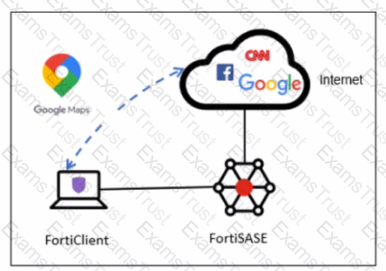You are designing a new network for Company X and one of the new cybersecurity policy requirements is that all remote user endpoints must always be connected and protected Which FortiSASE component facilitates this always-on security measure?
Which of the following describes the FortiSASE inline-CASB component?
What are two requirements to enable the MSSP feature on FortiSASE? (Choose two.)
What are two advantages of using zero-trust tags? (Choose two.)
When you configure FortiSASE Secure Private Access (SPA) with SD-WAN integration, you must establish a routing adjacency between FortiSASE and the FortiGate SD-WAN hub. Which routing protocol must you use?
Which secure internet access (SIA) use case minimizes individual endpoint configuration?
Which two statements describe a zero trust network access (ZTNA) private access use case? (Choose two.)
When deploying FortiSASE agent-based clients, which three features are available compared to an agentless solution? (Choose three.)
To complete their day-to-day operations, remote users require access to a TCP-based application that is hosted on a private web server. Which FortiSASE deployment use case provides the most efficient and secure method for meeting the remote users' requirements?
Refer to the exhibit.

A company has a requirement to inspect all the endpoint internet traffic on FortiSASE, and exclude Google Maps traffic from the FortiSASE VPN tunnel and redirect it to the endpoint physical Interface.
Which configuration must you apply to achieve this requirement?
How does FortiSASE hide user information when viewing and analyzing logs?
An organization needs to resolve internal hostnames using its internal rather than public DNS servers for remotely connected endpoints. Which two components must be configured on FortiSASE to achieve this? (Choose two.)